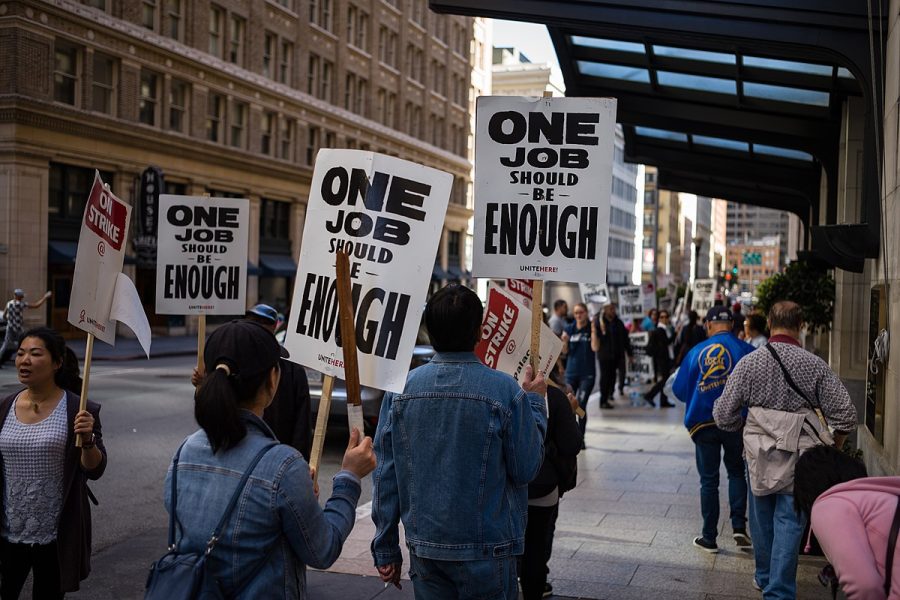Hayward resident Iris McCree, 38, has been unemployed since 2007. Relying on AFDC, a welfare program, to support her three children, she is “hopeful every day to work for [her] family“ and will “take anything I can get, McDonal’s, Burger King, anything that brings in a check.”
Despite the upward turn of the global economy, African-American unemployment in Alameda County remains high, as blacks continue to struggle in the labor market.
In 2010, black unemployment rates in the county reached nearly 21 percent, according to the Alameda County Administrator’s Office, and have continued to see little to no fluctuation as the nation comes out of the Great Recession.
With a countywide unemployment rate of 9.5 percent — 1.3 percent less than the national rate, according the Bureau of Labor Statistics — several members of the Bay Area black community expressed discontent over their inability to find employment in the labor market, claiming they haven’t been given the same opportunities as others.
According to the U.S. Department of Labor, the increase in the black unemployment rate during the recession was larger than rates for other races partly because workers with less education are particularly hit hard during recessions.
For Bay Area resident Jonathan Noland, recovering from the recession has amounted to a long time job hunt, which has diminished the majority of his savings.
After completing nearly 30 job applications and submitting a countless number of résumés, Noland remains unemployed.
“It’s very frustrating,” said Noland. “I’m definitely qualified and I continue to get passed up for job opportunities in a white collared job market.”
Stressing the “white” in white collared, Noland shook his head and kept his eyes fixated on the ground.
Despite his educational background and adequate skill set, the information technologist has searched for work for over a year and consistently comes up empty handed.
“I have to wonder if I’ll ever find work,” said Noland.
During 2011 the national economy grew by over 1.6 million jobs, growing 1.3 percent over 2010. Still, there was virtually no movement in the black unemployment rate from January 2011 to December 2011, as the rate slightly fluctuated between 15 to 16 percent, according to UC Berkeley Labor Center’s “Annual Black Employment and Unemployment in 2011.”
UC Berkeley Labor Policy Specialist Steven Pitts says disproportional unemployment rates in the labor market are a historical problem that has lingered throughout the years.
“One thing that’s important to realize is that the black unemployment rate has been twice the white unemployment rate for almost 60 years, so it’s not a recent phenomenon,” said Pitts.
Although the educational opportunities have improved for the black community, Pitts says a hiring bias still remains with various employers.
“The overriding issue is that we still do have discrimination that takes place and it takes place in many different ways,” said Pitts.
“I’m equally qualified as each and every applicant,” said Noland. “I hate to admit it, but sometimes I wonder if it’s because I’m a black man.”
While blacks have experienced the second highest unemployment rate in Alameda County, they are not alone in their struggles to obtain employment.
The unemployment rate for Pacific Islanders surpassed that of blacks in 2010 with rates as high as 26.4 percent, but decreased significantly in 2011.
Members of the white and Asian communities experienced rates more than 10 percent less of blacks and Pacific Islanders, with rates of 8.9 and 9.4 percent respectively.
Pitts said the issue around the job crisis in the black community is a very two-dimensional problem.
“It’s one of unemployment and low wage work,” said Pitts. “So we have to have a broader understanding of the problem and take steps to address both the question of unemployment and the question of low wage work.”
Black fast food worker Ramon Ellway said the difficulty of finding employment has only increased in the past five years. Although he finally managed to find work, he struggled for over eight months, deciding that his troubles emerged because everyone was equally as qualified in the fast food industry.
“I’m going to school to try and make a better life for myself,” said Ellway. “But if I graduate and there is still discrimination in the workplace, will my chances of finding a job even get better?”
In a state that’s moving away from providing access to public resources, Nicolas Baham, CSU East Bay professor of Ethnic Studies, says opportunities for the future advancement of all races are bleaker with every coming budget cut.
“The fact that we’re turning over into a new economy that demands a more highly trained worker means the need for higher education,” said Baham. “What we’re doing is saying you need more training, you need more expertise, you need more skill, but ‘Oh guess what, we’re not providing those things.’”
Pitts said the answer to decreasing the high unemployment rate amongst blacks is to counteract the state’s current agenda of eliminating social programs. Rather than cutting state-funded resources, Pitts says governments must implement economic development projects within local communities.
“It’s important to go to the low wage labor market and find ways to improve the quality of work there,” said Pitts.
He added that hiring halls and more participation from blacks in labor unions could potentially improve the high unemployment rate.













